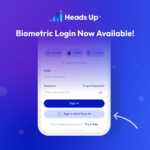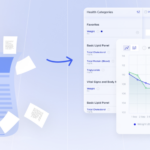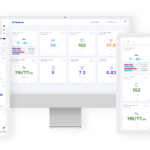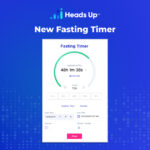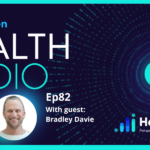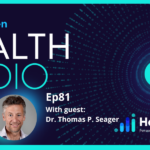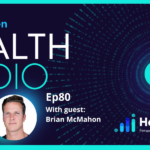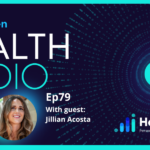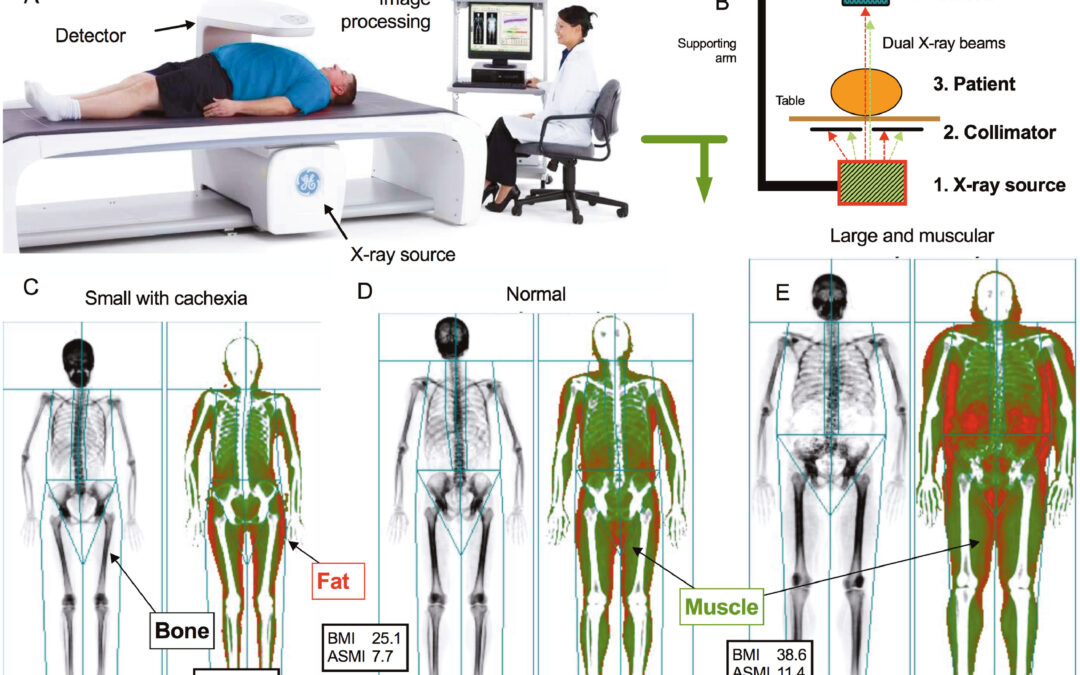
by Heads Up Health | Nov 2, 2023 | Educational, Educational Content
Understanding Appendicular Lean Mass Index (ALMI)
As the world of health and fitness continues to evolve, so do the metrics and indexes used to measure and monitor our bodies. One such evolution is the Appendicular Lean Mass Index (ALMI). This article aims to provide an authoritative, professional, and comprehensive guide to understanding the ALMI, its importance, and its application in various fields of health science.
What is Appendicular Lean Mass Index (ALMI)?
The Appendicular Lean Mass Index, or ALMI, is a measure derived from the mass of lean muscle in the upper and lower extremities of the body. It’s calculated by summing the lean muscle mass of the arms and legs, measured in kilograms, and adjusting it for height, measured in meters squared (m^2).
Importance of Appendicular Lean Mass Index
ALMI is a critical tool for assessing muscle health, particularly in older adults and populations at risk of sarcopenia — a condition characterized by loss of muscle mass and function with age. Thus, by providing an objective measure of muscle mass, ALMI serves as an important indicator of overall body composition and physical health.
Appendicular Lean Mass Index and Body Composition
Body composition refers to the percentage of different types of tissues in our bodies, including fat, muscle, and bone. Dual X-ray Absorptiometry (DXA) is the gold standard for body composition assessment, enabling accurate measurement of each of these components.
With DXA, you can obtain a detailed printout of body composition data, including the ALMI. This information can be beneficial for tracking changes in muscle mass over time, especially for athletes, or for monitoring the risk of sarcopenia in older adults.
How to measure the Appendicular Lean Mass
The measurement of Appendicular Lean Mass (ALM) is typically done using various techniques. One common method is bioimpedance analysis, which measures the resistance of electrical currents as they pass through the body. Another widely used technique is dual-energy X-ray absorptiometry (DXA), which uses low-dose X-rays to measure bone density and body composition. A study evaluating the accuracy of bioelectrical impedance analysis (BIA) found that it slightly overestimated ALM compared to DXA measurements. However, equations incorporating factors like BMI, gender, and fat percentage can improve the accuracy of BIA measurements. These methods provide valuable insights into ALM and can help distinguish individuals at higher risk of poor outcomes, such as mortality or functional decline, especially among older adults and stroke patients.
Appendicular Lean Mass Index in Health and Fitness Assessment
In the realm of health and fitness, ALMI can offer valuable insights into an individual’s body composition. For example, athletes might use ALMI to track changes in their muscle mass over time or to compare their muscle mass to normative values for their sport. Such comparisons can provide an indication of whether an athlete’s muscle mass is appropriate for their sport or if they need to focus on building more muscle.
Appendicular Lean Mass Index and Aging
As people age, they naturally lose muscle mass. This loss is a significant factor in the development of frailty and functional impairment in older adults. ALMI serves as a crucial index in assessing this muscle loss and the associated risk of adverse health outcomes.
Appendicular Lean Mass Index and Mortality Risk
Studies have shown a significant association between ALMI and mortality risk among older adults. Higher ALMI values are associated with a lower risk of mortality. By distinguishing the risk of mortality among older adults, ALMI can help identify those at a higher risk of poor outcomes, prompting early intervention.
Appendicular Lean Mass Index and Sarcopenia
Sarcopenia is a condition characterized by the loss of muscle mass and function, often associated with aging. ALMI can help assess the risk of sarcopenia. Certain cut off values have been identified as risk factors for sarcopenia in men and women, making ALMI a valuable tool in the early diagnosis and management of sarcopenia.
Appendicular Lean Mass Index in Disease States
Apart from aging and fitness assessment, ALMI has applications in various disease states. For instance, cancer patients often experience muscle wasting, and ALMI can be used to track this loss and guide interventions. Similarly, ALMI can help assess the risk of metabolic diseases associated with obesity.
Appendicular Lean Mass Index and Exercise
Exercise, particularly resistance training, is known to increase muscle mass. Thus, tracking changes in ALMI can provide an objective measure of the effectiveness of exercise interventions.
The Future of Appendicular Lean Mass Index
As more research is conducted, the utility of ALMI in various fields of health and fitness is likely to continue to evolve. While it’s already a valuable tool for assessing body composition and predicting health outcomes, future research may uncover new applications for this index, making it an even more indispensable tool in the health and fitness toolbox.
Conclusion
The Appendicular Lean Mass Index provides an essential measure of muscle mass, offering valuable insights into an individual’s overall health and fitness. Whether you’re an athlete looking to optimize your performance, an older adult concerned about sarcopenia, or a health professional seeking to provide the best care for your patients, understanding and utilizing ALMI can be a game-changer.
Acknowledgments
The research and development of Appendicular Lean Mass Index have been supported by numerous institutions and scientists worldwide. Its application has greatly enhanced our understanding of body composition and its implications for health. As we continue to further explore its potential, we acknowledge the significant contributions made by all involved in bringing this valuable tool to life.
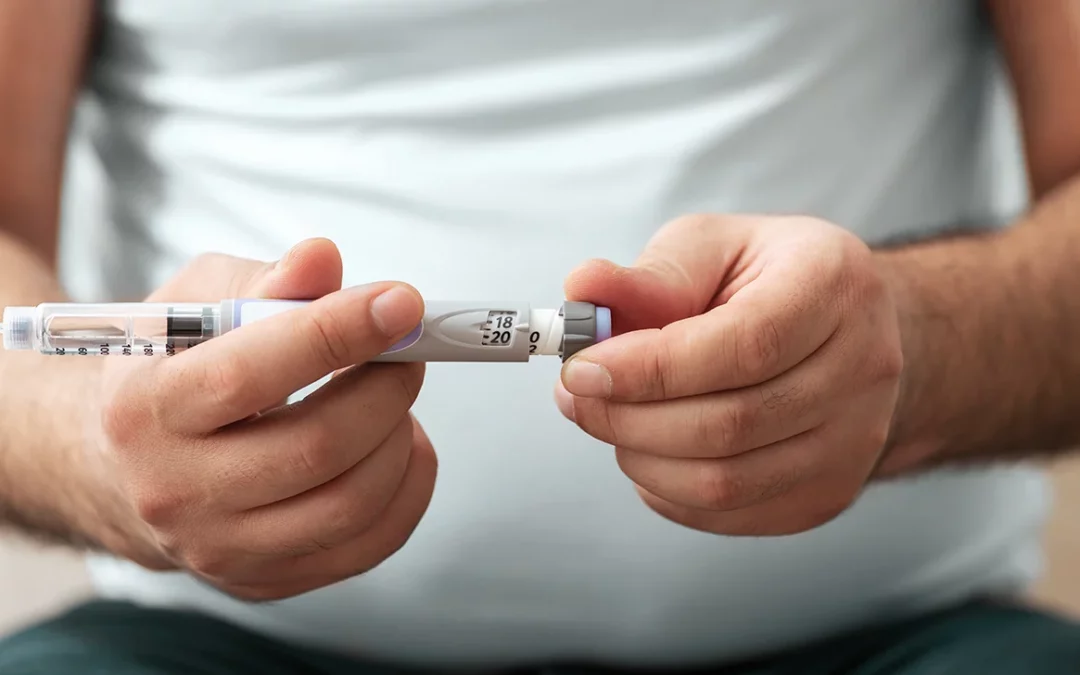
by Heads Up Health | Oct 24, 2023 | Educational, Educational Content
Glucagon-like peptide-1 receptor agonists, more commonly known as GLP-1 medications are a class of drugs originally developed in 2005 for the treatment of type 2 diabetes. They are also now used to treat obesity, as weight loss is a side effect of taking these medications.
There are several different types of GLP-1 medications, but Semaglutide (Ozempic®/Wegovy®) or Trizepatide (Mounjaro®) may be the most familiar brand names.
How do GLP-1 medications work?
GLP-1 medications act similarly to a natural hormone called GLP-1. This hormone is made in the small intestine. It plays several important roles in the metabolism of food and the regulation of blood sugar.
In the body, GLP-1 is responsible for:
- Slowing down stomach emptying to control how fast glucose (sugar) enters the bloodstream after a meal
- Impacting areas of the brain that trigger fullness, so you feel satisfied after meals
- Triggering the release of insulin, a hormone that helps lower blood sugar after meals
- Stopping the release of glucagon, a hormone that raises blood sugar
GLP-1 medications act like the natural form of the GLP-1 hormone in the body. The medication binds to receptors that are also triggered by the GLP-1 hormone, resulting in lower blood sugar and an increased feeling of fullness after meals.
GLP-1 and Blood Sugar
GLP-1 medication helps regulate blood sugar after meals due to the effect it has on insulin and glucagon, particularly important for those with type 2 diabetes. Slowing down digestion after a meal also allows your body to process the glucose in your food at a slower pace, preventing spikes in blood sugar.
GLP-1 and Weight Loss
GLP-1 medication promotes weight loss by increasing satiety, or the feeling of fullness after meals, so you eat fewer calories. It also slows down the movement of food through the stomach, so you eat less at your next meal.
Many users report that GLP-1 medications also reduce cravings and “food noise”. It is currently unclear how this medication does this but is likely due to the impact it has on areas of the brain connected to rewards and motivation.
Controlling blood sugar spikes also helps reduce body weight. Dysregulated blood glucose, even if not at diabetic levels, makes weight loss more difficult. The ability of GLP-1 medications to help regulate glucose may be another reason they help with weight loss.
Most GLP-1 medications are currently being used off-label to help treat obesity. But, in June of 2021, the FDA approved Semaglutide (Wegovy®) and Liraglutide (Saxenda®) for weight loss. More of these medications are expected to be approved for weight loss, due to the popularity and effectiveness of these drugs.
References:
- Shaefer, C. F., Jr, Kushner, P., & Aguilar, R. (2015). User’s guide to mechanism of action and clinical use of GLP-1 receptor agonists. Postgraduate Medicine, 127(8), 818–826.
- Müller, T. D., Finan, B., Bloom, S. R., et al. (2019). Glucagon-like peptide 1 (GLP-1). Molecular Metabolism, 30, 72–130.
- Williams, D. L. (2010). Expecting to eat: glucagon-like peptide-1 and the anticipation of meals [Review of Expecting to eat: glucagon-like peptide-1 and the anticipation of meals]. Endocrinology, 151(2), 445–447.
- Blum, D. (2023, June 21). People on Drugs Like Ozempic Say Their “Food Noise” Has Disappeared. The New York Times. https://www.nytimes.com/2023/06/21/well/eat/ozempic-food-noise.html

by Ryan | Aug 4, 2023 | Educational, Educational Content
Introduction to Supplements and Their Importance
Supplements have become a significant part of modern living, with numerous people incorporating them into their daily lives. These products, which come in various forms, including tablets, capsules, powders, and liquids, enrich the body with the essential vitamins and minerals that may not be adequately provided by a regular diet. The importance of supplements cannot be understated. They play a vital role in filling nutritional gaps, boosting immunity, enhancing physical performance, and supporting overall health and well-being.
However, despite the widespread use of these dietary aids, there remains a considerable amount of misunderstanding and misinformation surrounding the subject. It’s essential to understand that not all supplements are created equal. The quality, efficacy, and safety of these products can vary dramatically, which underscores the need for proper validation and verification of supplements outcomes.
This constant need for validation is not without reason. The supplement industry, now worth billions, is a vast and varied landscape. With countless products in the market, consumers are often left confused and overwhelmed when choosing the right supplement. This is where the importance of validating supplement outcomes comes into play.
Why People Take Nutritional Supplements
People take nutritional supplements for a variety of reasons. For some, it’s about enhancing their dietary intake and ensuring they get sufficient nutrients, such as vitamins, minerals, and essential fatty acids. For others, it’s about addressing specific health concerns or conditions, boosting performance in sports and fitness activities, improving cognitive function, or even managing weight.
The reasons for taking nutritional supplements are as diverse as the supplements themselves. Aging populations may take supplements to replenish nutrients they are no longer getting in adequate amounts from food alone. Athletes may use them to enhance their performance and recovery. Pregnant women may take folic acid to reduce the risk of neural tube defects in their babies.
However, whatever the reason for taking these supplements, the expectation is the same: that they provide the promised benefits. This is why validation is so crucial in the supplements industry. Validation provides assurance that the supplement will deliver the claimed benefits, ensuring consumers get value for their money and, more importantly, safeguard their health.
The Ongoing Debate: Do Supplements Work?
The efficacy of supplements has been a subject of ongoing debate, polarizing opinions among health professionals, researchers, and consumers alike. This controversy is rooted in the inconsistent results and interpretations of scientific studies on the subject. Some studies suggest that certain supplements can have significant health benefits, while others indicate that the effects are negligible or even potentially harmful.
This debate is further fueled by the fact that the supplements industry is not as tightly regulated as the pharmaceutical industry. This has led to concerns about the accuracy of supplement labels, the quality of ingredients, and the veracity of health claims made by supplement manufacturers. Critics argue that without rigorous testing and verification, it’s difficult to ascertain whether supplements work as advertised.
On the other hand, proponents of supplements argue that many of these products have been used safely and effectively for centuries. They point to numerous studies indicating that supplements can provide essential nutrients that many people lack in their diets, particularly in developed countries where processed foods are prevalent.
Evaluating the Effectiveness of Nutrition Supplements
Determining the effectiveness of nutritional supplements requires a multifaceted approach. This includes examining the quality of the ingredients, the method of delivery, the dosage, and the body’s ability to absorb and utilize these nutrients.
Quality is a critical factor when evaluating the effectiveness of a supplement. High-quality supplements are made from pure, potent, and safe ingredients. They are manufactured under strict quality control standards to ensure their purity and potency. However, not all supplements meet these standards, which can affect their effectiveness.
The method of delivery is another crucial factor. Some nutrients are better absorbed in specific forms. For example, some forms of calcium are better absorbed than others, and certain types of vitamin B12 are more bioavailable than others. The dosage also matters. Too little may not provide the desired benefits, while too much can be harmful.
Finally, the body’s ability to absorb and utilize these nutrients is vital. Various factors can affect this, including age, health status, and individual genetic variations. This is why it’s important to choose supplements that are easily absorbed and utilized by the body.
The Science Behind Supplements That Work
The science behind supplements that work is both complex and fascinating. It’s about understanding the body’s biochemical processes and how specific nutrients can support these processes. It’s about exploring the synergistic relationships between different nutrients and how they interact with each other and the body. It’s about investigating the sources of these nutrients, their stability, their bioavailability, and their safety.
Numerous scientific studies have been conducted to explore the effectiveness of supplements. Some of these studies have provided compelling evidence of the benefits of certain supplements. For instance, the National Institutes of Health (NIH) reports that omega-3 fatty acids can help reduce heart disease risk. The American Heart Association recommends omega-3 supplements for people with a history of heart disease.
Another example is vitamin D. According to the NIH, vitamin D is essential for bone health, and supplements can help prevent deficiencies in people who don’t get enough from sunlight or their diet. Other research suggests that certain probiotics can support digestive health and may help with conditions like irritable bowel syndrome.
The Impact of Validating Supplement Outcomes
The process of validating supplement outcomes has a significant impact on the industry and consumers. It not only helps ensure the safety and efficacy of products, but it also enhances consumer confidence and trust in supplements.
Validation provides scientific evidence that a supplement delivers the claimed benefits. This can be achieved through rigorous testing, clinical trials, and third-party verification. When a supplement is validated, it means that it has been thoroughly tested and proven to be effective.
Furthermore, validation can help weed out substandard products and unethical manufacturers. By highlighting the supplements that work, it allows consumers to make informed decisions and choose products that can truly benefit their health.
Advantages of Validated Supplements: A Deeper Dive
Validated supplements offer several advantages. Firstly, they provide assurance of safety and efficacy. With validated supplements, consumers can be confident that they are taking a product that has been tested and proven to work.
Secondly, validated supplements help reduce the risk of adverse effects. Because they have been thoroughly tested, the likelihood of encountering harmful side effects is significantly reduced.
Thirdly, validated supplements can lead to better health outcomes. When a supplement has been validated, it means that its health claims are backed by scientific evidence. Therefore, consumers are more likely to experience the health benefits that the product promises.
Finally, validated supplements contribute to trust and transparency in the industry. When manufacturers take the time and effort to validate their products, it shows that they are committed to providing high-quality, effective products.
Case Studies: The Success of Validated Nutritional Supplements
The success of validated nutritional supplements can be seen in numerous case studies. For instance, a study published in the Journal of the American Medical Association found that omega-3 fatty acids can reduce the risk of heart disease. This study validated the effectiveness of omega-3 supplements, leading to increased consumer confidence and sales.
Another successful case is the validation of probiotics. A study published in the British Journal of Nutrition found that certain strains of probiotics can support digestive health. This validation has led to a boom in the probiotics market, with consumers increasingly seeking out these beneficial bacteria.
These case studies illustrate the transformative potential of validating supplements. By providing scientific evidence of their benefits, validated supplements can enhance consumer confidence, improve health outcomes, and drive industry growth.
Mode+Method was looking to validate a new product in the supplement space aimed at increasing a customer’s HRV with a goal of rapidly scaling sales this calendar year. Their primary challenges were finding users to test the product, the cost of collecting, managing, and analyzing health data, finding the right partner(s), with a flexible platform. After using Heads Up’ they were able to validate the efficacy of their HRV+ supplement and used that to launch their product sales. Read full case study.
The Future of Supplement Validation and Its Impact on the Industry
The future of supplement validation will likely involve more rigorous testing, stricter regulations, and greater transparency. As consumers become more knowledgeable and discerning, the demand for validated supplements will continue to grow. This will drive the industry to invest more in research and development, improve manufacturing practices, and provide more accurate and detailed information about their products.
The impact of this trend on the industry will be profound. It will encourage manufacturers to focus on quality over quantity, to invest in science rather than marketing hype, and to prioritize consumer health over profits. This shift will ultimately lead to a more trusted, respected, and successful supplements industry.
In conclusion, the validation of supplements has the potential to transform the industry and improve public health. By providing scientific evidence of their safety and efficacy, validated supplements can enhance consumer confidence, lead to better health outcomes, and drive industry growth.
While the process of validating supplements can be complex and costly, the benefits far outweigh the challenges. As more manufacturers embrace this practice, the quality, safety, and effectiveness of supplements will continue to improve, benefiting consumers and the industry alike.
Are you interested in learning more about validating your supplements outcomes?
HRV+ Case Study
Schedule a call with a study specialist today.
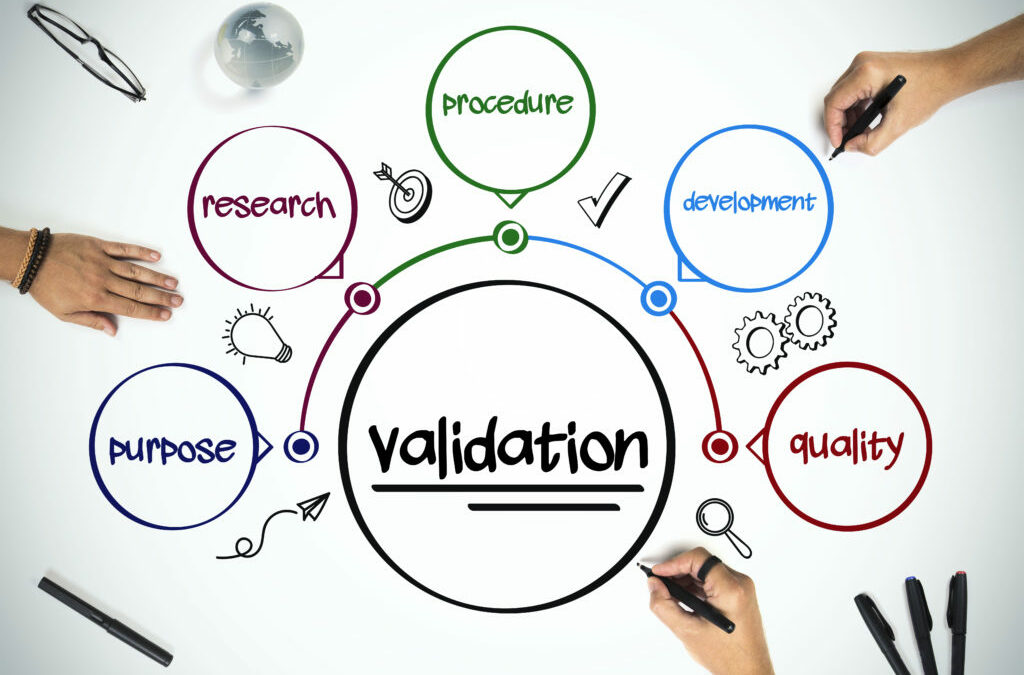
by Heads Up Health | Jun 22, 2023 | Educational, Educational Content
Introduction to Supplements and Their Importance
Supplements have become a significant part of modern living, with numerous people incorporating them into their daily lives. These products, which come in various forms, including tablets, capsules, powders, and liquids, enrich the body with the essential vitamins and minerals that may not be adequately provided by a regular diet. The importance of supplements cannot be understated. They play a vital role in filling nutritional gaps, boosting immunity, enhancing physical performance, and supporting overall health and well-being.
However, despite the widespread use of these dietary aids, there remains a considerable amount of misunderstanding and misinformation surrounding the subject. It’s essential to understand that not all supplements are created equal. The quality, efficacy, and safety of these products can vary dramatically, which underscores the need for proper validation and verification of supplements outcomes.
This constant need for validation is not without reason. The supplement industry, now worth billions, is a vast and varied landscape. With countless products in the market, consumers are often left confused and overwhelmed when choosing the right supplement. This is where the importance of validating supplement outcomes comes into play.
Understanding Why People Take Nutritional Supplements
People take nutritional supplements for a variety of reasons. For some, it’s about enhancing their dietary intake and ensuring they get sufficient nutrients, such as vitamins, minerals, and essential fatty acids. For others, it’s about addressing specific health concerns or conditions, boosting performance in sports and fitness activities, improving cognitive function, or even managing weight.
The reasons for taking nutritional supplements are as diverse as the supplements themselves. Aging populations may take supplements to replenish nutrients they are no longer getting in adequate amounts from food alone. Athletes may use them to enhance their performance and recovery. Pregnant women may take folic acid to reduce the risk of neural tube defects in their babies.
However, whatever the reason for taking these supplements, the expectation is the same: that they provide the promised benefits. This is why validation is so crucial in the supplements industry. Validation provides assurance that the supplement will deliver the claimed benefits, ensuring consumers get value for their money and, more importantly, safeguard their health.
The efficacy of supplements has been a subject of ongoing debate, polarizing opinions among health professionals, researchers, and consumers alike. This controversy is rooted in the inconsistent results and interpretations of scientific studies on the subject. Some studies suggest that certain supplements can have significant health benefits, while others indicate that the effects are negligible or even potentially harmful.
This debate is further fueled by the fact that the supplements industry is not as tightly regulated as the pharmaceutical industry. This has led to concerns about the accuracy of supplement labels, the quality of ingredients, and the veracity of health claims made by supplement manufacturers. Critics argue that without rigorous testing and verification, it’s difficult to ascertain whether supplements work as advertised.
On the other hand, proponents of supplements argue that many of these products have been used safely and effectively for centuries. They point to numerous studies indicating that supplements can provide essential nutrients that many people lack in their diets, particularly in developed countries where processed foods are prevalent.
Evaluating the Effectiveness of Nutrition Supplements
Determining the effectiveness of nutritional supplements requires a multifaceted approach. This includes examining the quality of the ingredients, the method of delivery, the dosage, and the body’s ability to absorb and utilize these nutrients.
Quality is a critical factor when evaluating the effectiveness of a supplement. High-quality supplements are made from pure, potent, and safe ingredients. They are manufactured under strict quality control standards to ensure their purity and potency. However, not all supplements meet these standards, which can affect their effectiveness.
The method of delivery is another crucial factor. Some nutrients are better absorbed in specific forms. For example, some forms of calcium are better absorbed than others, and certain types of vitamin B12 are more bioavailable than others. The dosage also matters. Too little may not provide the desired benefits, while too much can be harmful.
Finally, the body’s ability to absorb and utilize these nutrients is vital. Various factors can affect this, including age, health status, and individual genetic variations. This is why it’s important to choose supplements that are easily absorbed and utilized by the body.
The Science Behind Supplements That Work
The science behind supplements that work is both complex and fascinating. It’s about understanding the body’s biochemical processes and how specific nutrients can support these processes. It’s about exploring the synergistic relationships between different nutrients and how they interact with each other and the body. It’s about investigating the sources of these nutrients, their stability, their bioavailability, and their safety.
Numerous scientific studies have been conducted to explore the effectiveness of supplements. Some of these studies have provided compelling evidence of the benefits of certain supplements. For instance, the National Institutes of Health (NIH) reports that omega-3 fatty acids can help reduce heart disease risk. The American Heart Association recommends omega-3 supplements for people with a history of heart disease.
Another example is vitamin D. According to the NIH, vitamin D is essential for bone health, and supplements can help prevent deficiencies in people who don’t get enough from sunlight or their diet. Other research suggests that certain probiotics can support digestive health and may help with conditions like irritable bowel syndrome.
The Impact of Validating Supplement Outcomes
The process of validating supplement outcomes has a significant impact on the industry and consumers. It not only helps ensure the safety and efficacy of products, but it also enhances consumer confidence and trust in supplements.
Validation provides scientific evidence that a supplement delivers the claimed benefits. This can be achieved through rigorous testing, clinical trials, and third-party verification. When a supplement is validated, it means that it has been thoroughly tested and proven to be effective.
Furthermore, validation can help weed out substandard products and unethical manufacturers. By highlighting the supplements that work, it allows consumers to make informed decisions and choose products that can truly benefit their health.
Advantages of Validated Supplements: A Deeper Dive
Validated supplements offer several advantages. Firstly, they provide assurance of safety and efficacy. With validated supplements, consumers can be confident that they are taking a product that has been tested and proven to work.
Secondly, validated supplements help reduce the risk of adverse effects. Because they have been thoroughly tested, the likelihood of encountering harmful side effects is significantly reduced.
Thirdly, validated supplements can lead to better health outcomes. When a supplement has been validated, it means that its health claims are backed by scientific evidence. Therefore, consumers are more likely to experience the health benefits that the product promises.
Finally, validated supplements contribute to trust and transparency in the industry. When manufacturers take the time and effort to validate their products, it shows that they are committed to providing high-quality, effective products.
Case Studies: The Success of Validated Nutritional Supplements
The success of validated nutritional supplements can be seen in numerous case studies. For instance, a study published in the Journal of the American Medical Association found that omega-3 fatty acids can reduce the risk of heart disease. This study validated the effectiveness of omega-3 supplements, leading to increased consumer confidence and sales.
Another successful case is the validation of probiotics. A study published in the British Journal of Nutrition found that certain strains of probiotics can support digestive health. This validation has led to a boom in the probiotics market, with consumers increasingly seeking out these beneficial bacteria.
These case studies illustrate the transformative potential of validating supplements. By providing scientific evidence of their benefits, validated supplements can enhance consumer confidence, improve health outcomes, and drive industry growth.
The Future of Supplement Validation and Its Impact on the Industry
The future of supplement validation will likely involve more rigorous testing, stricter regulations, and greater transparency. As consumers become more knowledgeable and discerning, the demand for validated supplements will continue to grow. This will drive the industry to invest more in research and development, improve manufacturing practices, and provide more accurate and detailed information about their products.
The impact of this trend on the industry will be profound. It will encourage manufacturers to focus on quality over quantity, to invest in science rather than marketing hype, and to prioritize consumer health over profits. This shift will ultimately lead to a more trusted, respected, and successful supplements industry.
In conclusion, the validation of supplements has the potential to transform the industry and improve public health. By providing scientific evidence of their safety and efficacy, validated supplements can enhance consumer confidence, lead to better health outcomes, and drive industry growth.
While the process of validating supplements can be complex and costly, the benefits far outweigh the challenges. As more manufacturers embrace this practice, the quality, safety, and effectiveness of supplements will continue to improve, benefiting consumers and the industry alike.
If you would like to participate in supplement validation studies, sign up for an account here.
Are you interested in validating your supplement?
Schedule a call with a study specialist today to discover how they can enhance your supplement’s validation study.

by Heads Up Health | Jun 22, 2023 | Educational, Educational Content
In the rapidly evolving landscape of healthcare technology, weight loss remote patient monitoring tools have emerged as game-changers. They provide healthcare professionals with the ability to continuously track and analyze patients’ progress, facilitating personalized, data-driven interventions. This article will delve into the benefits and types of these innovative tools, with a focus on the Heads Up Health platform, a leading provider in this sphere.
Understanding Weight Loss Remote Patient Monitoring (RPM)
Remote patient monitoring, or RPM, is a technology that allows the transmission of health-related data from a patient to the healthcare providers in a different location. This technology has seen extensive application in the management of chronic conditions like diabetes and heart disease, but its use in weight management has recently garnered attention.
RPM for weight loss involves the use of digital tools that record and transmit data related to a patient’s weight, physical activity, diet, and other parameters. These tools can range from advanced smart scales to wearable fitness trackers. The data collected provides a real-time, comprehensive overview of a patient’s weight management progress, enabling healthcare providers to offer personalized guidance and interventions.
There is a broad array of remote patient monitoring tools designed for weight loss, each with its unique features and benefits. Here are a few common types:
Digital Scales
Digital scales are one of the most basic yet vital tools in RPM for weight loss. Innovations in technology have led to the development of ‘smart’ scales that can measure not only weight but also other parameters like body mass index (BMI), body fat percentage, and muscle mass. These scales can transmit the data instantly to a remote server accessible by healthcare providers.
Fitness Trackers
Wearable fitness trackers are another popular tool in weight loss remote patient monitoring. These devices can track various parameters like steps taken, calories burned, heart rate, and sleep quality. The data collected provides valuable insights into a patient’s physical activity levels and can help tailor exercise plans to their specific needs.
Glucose and Blood Pressure Monitors
For patients battling obesity-related conditions like diabetes or hypertension, RPM can include tools like smart glucometers and blood pressure monitors. These devices allow patients to monitor their blood sugar and blood pressure levels at home, with the data being instantly transmitted to their healthcare provider.
Health Apps
Health apps are the cornerstone of RPM, offering a platform for data collection, analysis, and communication. These apps can sync data from various devices, provide reminders for medication or exercise, offer dietary advice, and facilitate communication with healthcare providers.
Weight Loss Medication Management
Weight loss medication management is one of the most important components of RPM. By monitoring patients’ medication intake, healthcare providers can adjust dosages as needed based on results and feedback from the patient. This helps maximize safety and efficacy while also helping to ensure that the patient doesn’t miss any doses or forget to take their medications. Learn about the The Semaglutide Weight Loss Dashboard w/ Remote Patient Monitoring here.
The Role of Heads Up Health in Weight Loss Remote Patient Monitoring
Heads Up Health is a leading player in the field of RPM, offering a comprehensive platform for health data management. Its platform is particularly beneficial for weight loss remote patient monitoring due to several key features.
Heads Up Health’s platform can integrate data from a wide array of devices, including digital scales, fitness trackers, glucose monitors, and blood pressure monitors. This feature allows for a holistic view of a patient’s health and weight loss progress.
Data Analysis
The platform provides powerful analytic tools that can track trends, identify patterns, and flag potential issues. This can help healthcare providers make informed, data-driven decisions regarding a patient’s weight loss plan.
Communication
Heads Up Health facilitates seamless communication between patients and healthcare providers. Providers can monitor their patients’ progress, send reminders or alerts, and provide personalized advice, all through the platform.
The use of RPM in weight loss management offers several benefits for both healthcare providers and patients:
Personalized Care
RPM tools provide a wealth of data that can be used to tailor weight loss plans to individual patients’ needs. Providers can adjust diet plans, exercise routines, and medications based on real-time data, leading to more effective and personalized care.
Improved Access and Engagement
RPM tools enable patients to actively participate in their weight loss journey. They can track their progress, make informed decisions about their health, and communicate easily with their healthcare providers. This not only improves access to care but also boosts patient engagement.
Cost-Efficiency
RPM can help reduce healthcare costs by minimizing the need for in-person consultations and hospital admissions. It can also lead to better health outcomes, further driving down costs in the long run.
Conclusion
Weight loss remote patient monitoring tools are revolutionizing the approach to weight management. With the ability to deliver personalized, real-time care, these tools are set to become an integral part of weight loss programs. Platforms like Heads Up Health are leading the way in this transformation, providing comprehensive solutions that empower patients and healthcare providers alike.
In a world where the prevalence of obesity and related health conditions is rising, the importance of effective weight management cannot be overstated. RPM tools offer a promising solution, harnessing the power of technology to foster healthier communities.

by Heads Up Health | Jun 20, 2023 | Educational, Educational Content
Photo by silviarita
Comprehensive guide to losing weight with GLP-1’s.
Weight loss is a common struggle for many individuals, and with the numerous options available for managing weight, it can be overwhelming to find the most effective method. One possible solution that has gained attention is the use of GLP-1 medications. In this article, we will explore how long you should take GLP-1’s for weight loss, the types of GLP-1 medications available, and the potential benefits and risks associated with their use.
Understanding GLP-1 and Its Role in Weight Loss
Before discussing how long to take GLP-1’s for weight loss, it is essential to understand what GLP-1 is and how it contributes to weight management. GLP-1, or glucagon-like peptide-1, is a hormone naturally produced by the body that plays a crucial role in regulating blood sugar levels and appetite. GLP-1 medications work by mimicking the effects of this hormone, ultimately leading to weight loss through a variety of mechanisms.
Mechanisms of Action for GLP-1 Medications
GLP-1 medications exert their weight loss effects through several mechanisms, which include:
- Appetite suppression: GLP-1 medications help reduce hunger by acting on the brain’s appetite control center, leading to a decrease in overall food intake.
- Slowing gastric emptying: These medications slow down the rate at which the stomach empties, prolonging the feeling of fullness and reducing the desire to consume more food.
- Improving insulin sensitivity: GLP-1 medications can improve insulin sensitivity, allowing the body to use glucose more effectively and potentially reducing the risk of developing type 2 diabetes.
By targeting these different aspects of weight management, GLP-1 medications can aid in achieving and maintaining weight loss goals.
Types of GLP-1 Medications for Weight Loss
There are several types of GLP-1 medications available, each with its unique properties and characteristics. Some of the most commonly prescribed GLP-1 medications for weight loss include:
- Liraglutide: Marketed under the brand name Saxenda, liraglutide is a once-daily injectable GLP-1 medication approved for weight loss in adults with a BMI of 30 or higher or those with a BMI of 27 or higher with at least one weight-related comorbidity.
- Semaglutide: Known by the brand name Wegovy, semaglutide is a once-weekly injectable GLP-1 medication that has shown promising results in weight loss and is approved for similar indications as liraglutide.
- Exenatide: Available under the brand names Byetta and Bydureon, exenatide is another injectable GLP-1 medication typically prescribed for type 2 diabetes management but has also demonstrated weight loss benefits.
While each of these medications works similarly, they may differ in terms of dosing frequency and potential side effects. It’s essential to consult with a healthcare provider to determine the most suitable GLP-1 medication for your needs.
So, How Long Do I Take GLP-1’s for Weight Loss?
The duration of GLP-1 medication use for weight loss will depend on several factors, including individual response, the specific medication prescribed, and the presence of any underlying medical conditions. It is essential to work closely with a healthcare provider to determine the appropriate length of treatment for your unique situation. That being said, some general guidelines can offer insight into how long GLP-1’s may be taken for weight loss:
- Short-term use: Some individuals may only require a short course of GLP-1 medication to achieve their weight loss goals. This could range from a few weeks to several months, depending on the individual’s response to treatment and the specific medication used.
- Long-term use: In some cases, GLP-1 medications may be prescribed for long-term use, particularly for individuals with chronic weight management issues or underlying medical conditions that warrant ongoing treatment. Long-term use may be necessary to maintain weight loss and prevent weight regain.
Ultimately, the duration of GLP-1 medication use will be determined on a case-by-case basis, taking into account the individual’s needs, goals, and overall health.
Potential Benefits of GLP-1 Medications for Weight Loss
GLP-1 medications offer several potential benefits for individuals struggling with weight loss, which include:
- Significant weight loss: Studies have shown that GLP-1 medications can lead to substantial weight loss, with some individuals losing up to 10% or more of their initial body weight.
- Reduced risk of weight-related comorbidities: By aiding in weight loss, GLP-1 medications can help reduce the risk of developing weight-related health conditions, such as type 2 diabetes, hypertension, and heart disease.
- Improved quality of life: Achieving and maintaining a healthy weight can lead to improvements in overall health, well-being, and quality of life.
- Non-surgical option: For individuals who may be considering weight loss surgery, GLP-1 medications offer a non-surgical alternative that can still yield significant weight loss results.
Potential Risks and Side Effects of GLP-1 Medications
As with any medication, there are potential risks and side effects associated with GLP-1 medications, which may include:
- Gastrointestinal side effects: Some of the most common side effects of GLP-1 medications are gastrointestinal in nature, such as nausea, vomiting, diarrhea, and constipation. These side effects are generally mild and tend to improve over time.
- Hypoglycemia: GLP-1 medications can cause low blood sugar levels, particularly when taken in combination with other diabetes medications. It’s essential to monitor blood sugar levels regularly and adjust treatment as needed to prevent hypoglycemia.
- Pancreatitis: While rare, some cases of pancreatitis have been reported in individuals taking GLP-1 medications. If you experience severe abdominal pain, nausea, vomiting, or fever while taking a GLP-1 medication, contact your healthcare provider immediately.
- Injection site reactions: As GLP-1 medications are injectable, some individuals may experience reactions at the injection site, such as redness, swelling, or pain. Rotating injection sites and using proper injection technique can help minimize these reactions.
Monitoring and Adjusting GLP-1 Medication Use for Weight Loss
It is crucial to regularly monitor and assess your progress while taking GLP-1 medications for weight loss. This may involve tracking changes in body weight, BMI, waist circumference, and other relevant health metrics. It’s also essential to communicate with your healthcare provider throughout the process, as they can help guide and adjust your treatment plan as needed to ensure the best possible outcomes.
Final Thoughts on How Long to Take GLP-1’s for Weight Loss
In conclusion, determining how long to take GLP-1’s for weight loss will depend on individual factors, including response to treatment, specific medication prescribed, and underlying medical conditions. Working closely with a healthcare provider can help you develop a personalized treatment plan that yields the best results for your unique needs. By understanding the potential benefits and risks associated with GLP-1 medications, you can make informed decisions about your weight loss journey and work towards achieving a healthier, happier version of yourself.










